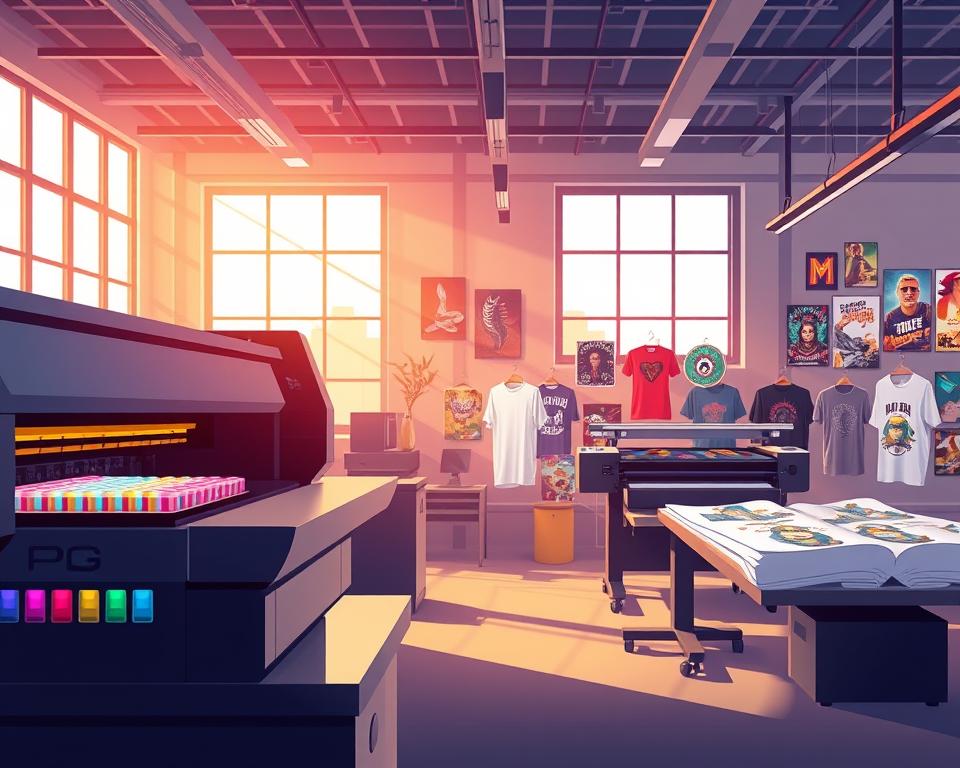Protect Your Organization’s Assets using Corporate Protection
Visualize an environment where all doors, server rooms, and data points remain guarded against risks. For contemporary businesses, defending both physical locations and digital frameworks isn’t a choice—it’s a necessity for staying alive. How is it that 68% of firms claim shortcomings in their security measures despite expanding budgets? The reason is found in selecting partners who offer more than mere assurances.
Divine Protection Services stands apart by blending advanced security patrol services monitoring with human expertise. Their methodology isn’t limited to securing doors—it predicts dangers before they grow. From storefronts to campuses, customers receive bespoke protection plans that evolve as challenges change.
Effective safeguarding transcends cameras and warning systems. It necessitates on-the-spot response squads skilled in tackling emergencies, as well as cyber safeguards for crucial data. This dual focus ensures both employees and assets stay secure, creating environments where growth thrives.
With a 97% client retention rate, the results speak louder than claims. One hospital network reduced theft by 83% within six months of collaboration. Another tech firm prevented a major data breach through proactive threat detection. Reassurance isn’t a luxury—it’s the outcome when planning aligns with execution.

Prepared to revolutionize the protection of your top assets? Let’s explore what true readiness looks like.
Why Divine Protection Services Is the Right Choice for Business Protection
Effective protection strategies blend technology with human insight for maximum impact. While providers like ADT offer standardized packages, Divine Protection Services crafts plans that evolve with your unique operational needs. Their 360-degree approach addresses vulnerabilities competitors often overlook.
Reliable Know-How Across the Country
Leveraging 15 years in the field, their staff manages issues from shoplifting to corporate spying. Rather than Securitas Technology’s one-size-fits-all setups, they utilize:
- Adaptive access systems that respond to occupancy trends
- Machine-learning video monitoring that interprets actions, not only movement
- Digital defense integrations for mixed on-premise/cloud setups
Tailored to Your Operations
A local hospital achieved a 74% decrease in drug diversion with their phased rollout approach. Their technical team began by mapping foot-traffic flows, then deployed biometric controls in vulnerable sectors. This pinpoint approach differs greatly from off-the-shelf “security solutions” that apply identical measures to warehouses and startups.
“They go beyond selling hardware—they foster partnerships,” observes a Fortune 500 security director. Live-monitoring units coordinate with your team, forming defense layers beyond what fixed systems offer. Whether upgrading existing infrastructure or starting fresh, their plans grow as your needs change.
An Overview of Comprehensive Security Solutions
Today’s organizations need defenses that evolve faster than emerging risks. Divine Protection Services provides customized solutions blending live monitoring, AI-driven analytics, and unified system integration. Their approach transforms isolated tools into a unified shield against physical and cyber threats.
Cutting-edge technology forms the backbone of these strategies. Cloud-based management platforms let teams oversee access controls, video feeds, and sensor networks from one dashboard. “Tomorrow’s success comes from tech that forecasts problems before alarms sound,” says a Cybersecurity Lead at TechCrunch.
Primary features involve:
- Intelligent video processing flagging odd conduct trends
- Secured data repositories adhering to rigorous regulatory benchmarks
- Self-driven event logging that accelerates reaction times
By merging hardware like 4K cameras with machine-learning software, vulnerabilities shrink. Using this two-tier approach, a Midwestern logistics firm lowered warehouse intrusions by 91%. The outcome? Workflows remain seamless, and resources stay secure without endless manual oversight.
These scalable solutions grow alongside your needs—be it adding branches or updating existing systems. Backed by round-the-clock assistance and periodic technology upgrades, customers shield their investments for the future while retaining strong risk oversight.
Understanding Business Security Needs for Modern Companies
No two enterprises face identical weak points. A downtown law firm faces different risks than a suburban warehouse or a medical clinic. That explains why one-size-fits-all strategies commonly fail to catch buried vulnerabilities. Successful tactics begin by charting exactly what your processes need.
Analyzing Risks and Exposure
Premier firms like Divine Protection Services start by creating 3D models of physical premises and digital infrastructures. They assess doorways, data pathways, and employee movements. A car parts maker realized that 62% of after-hours operations happened in unsupervised storage spots—a blind spot old-school setups missed.
Essential assessment techniques encompass:
- Infrared checks pinpointing camera coverage gaps
- Controlled breach simulations to highlight response gaps
- Employee habit tracking revealing accidental security lapses
Detection tools play a critical role here. Advanced sensors flag unusual movements near restricted areas before incidents occur. One Midwestern hospital utilized heat-map tools to slash unauthorized access to meds by 89%.
Personalized approaches respond to industry-centric obstacles. Retailers might prioritize loss prevention algorithms, while tech firms focus on encrypted access protocols. As one risk analyst notes: “Protection isn’t about barriers—it’s about smart filters that let the right people in and keep threats out.”
Advanced Video Surveillance and Alarm Systems
Today’s camera systems not only observe—they anticipate and thwart. Premier firms like ADT and Securitas Technology use platforms that scrutinize actions while countering dangers immediately. Such offerings establish smart perimeters, merging acute surveillance with swift intervention.
Real-Time Video Monitoring Features
Ultra-HD cameras now provide crisper visuals than before, even in poor lighting. ML-driven analytics review footage for odd motions, such as someone loitering near off-limits areas. Principal functions encompass:
- 4K detail combined with 360° surveillance for parking and warehouses
- Online storage maintaining recordings for more than 90 days
- Immediate notifications delivered to mobile devices upon glass-break detection
One retail brand saw a 41% drop in shoplifting thanks to motion-detecting cameras that trail suspects on their own. This tech helps teams act before incidents escalate.
Innovative Alarm and Detection Technology
Smart alarms now talk to other devices. When a window detector goes off, adjacent cameras focus as entry points seal. Securitas notes that response speeds improve by 58% through this synergy.
Modern vibration sensors detect tampering efforts on vaults or rack systems. Infrared sensors likewise detect heat bursts from malfunctioning equipment. These layers function like a digital nerve system—silently alert until activation is necessary.
“It’s more than just louder alarms,” says an ADT engineer. “It’s intelligent alerts that identify precise risk areas.” From warehouses to offices, these systems adapt to protect what matters most.
Next-Generation Access Control Technologies
An ideal key shouldn’t simply unlock doors—it ought to confirm who’s wielding it. Modern access control systems act as intelligent gatekeepers, verifying identities before granting entry. Providers like ADT now use mobile credentials and fingerprint scans instead of easily copied keycards.
Sophisticated platforms merge biometric validation with live camera streams. Facial ID programs match visitors to vetted lists while 4K cameras log all entry attempts. This dual-method strategy prevents unauthorized access in advance.
For instance, a Boston healthcare facility cut after-dark break-ins by 76%. They installed palm-vein scanners at pharmacy entrances and linked cameras to motion sensors. Staff gained smooth access, while outsiders triggered instant alerts.
Today’s solutions blend physical and digital safeguards seamlessly. Cloud-based dashboards let managers adjust permissions remotely, revoking access during off-hours. Integrated alarms lock down areas if sensors detect forced entry attempts.
“Precision matters more than ever,” remarks an ADT field technician. Customized controls safeguard critical areas without hindering operations. From laboratories to executive suites, intelligent platforms allow only approved personnel free movement—safeguarding teams and resources.
Proactive Intrusion Detection and 24/7 Monitoring
Risks don’t take breaks at 5 PM—they hit when guards are down. Divine Protection Services employs ML-driven detectors that learn routine behaviors throughout your premises. Unlike standard systems from ADT or Securitas Technology, these tools predict irregularities before they escalate, ensuring threats get neutralized fast.
Continuous Watch, Quicker Outcomes
24/7 surveillance cuts reaction times in crises. When sensors spot irregular activity near restricted spots, immediate alerts reach both your personnel and professional operators. A distribution center reduced issue resolution from 22 minutes down to 3.7 minutes with this approach.
Primary attributes include:
- Adaptive algorithms that learn fresh breach techniques
- Thermal sensors identifying heat signatures in no-light areas
- Auto-seal protocols that engage during breach events
Real-time dashboards show live feeds and threat levels, letting managers act decisively. A retail client reduced after-hours break-ins by 67% within four months. As their operations director noted: “The system doesn’t just watch—it thinks three steps ahead.”
Nonstop surveillance builds trust with customers and employees alike. Whether handling midnight alerts or holiday risks, constant coverage keeps operations steady. Given that threats evolve every day, anticipatory defense isn’t optional—it’s how today’s companies keep pace.
Fusion of State-of-the-Art Security Innovations
Contemporary protection isn’t solely about locks—it’s about intelligent integrations. Top solutions such as Securitas Technology’s secureStat® HQ™ combine detectors, cameras, and analytics into a single adaptive system. Such convergence transforms standalone devices into a single barrier that adjusts to threats instantly.
Ultra-HD cameras integrated with ML-powered video analytics identify atypical conduct faster than human oversight. For instance, shops today deploy motion sensing to highlight loitering in high-theft zones. The technology sends alerts before incidents escalate, letting staff intervene proactively.
Current configurations pair rugged devices with cloud-driven analytics. Access control panels sync with mobile apps, allowing remote permission updates. One Midwestern medical center cut illicit access by 79% using palm-vein readers paired with heat sensors.
These linked systems offer real-time insights through control panels. Managers see live feeds, threat levels, and response protocols in one place. “Integration enables us to respond to trends, not just alerts,” says a Securitas specialist. From smoke detection to digital safeguarding, integrated management fulfills shifting needs while ensuring smooth operations.
Boosting Protection Through Unified Security Platforms
Combined security infrastructures operate like a digital nerve network—tying each safeguard layer to respond in unison. When cameras, alarms, and access controls work together, they create environments where risks get spotted faster and handled smarter. Suppliers like ADT and Securitas Technology today provide platforms where sensors initiate automated safeguards, lowering human oversight errors.
Clever Innovations in Security Systems
Modern setups merge surveillance tools with real-time analytics to predict issues before they escalate. For instance, ADT’s Command suite connects 4K cameras to motion-triggered alerts. When a sensor notices abnormal motion, surrounding cameras zoom and doors lock autonomously. This smooth integration slashes response intervals by up to 65% over independent devices.
Connected devices also learn from daily patterns. Intelligent cameras assess pedestrian flows, marking lingering near off-limits areas. Thermal sensors in warehouses detect heat spikes from equipment malfunctions. “Unified systems transform raw inputs into actionable intelligence,” notes a Securitas engineer. One logistics company slashed break-ins by 78% using these layered defenses.
Ongoing analytics enhance operations as time goes on. Platforms monitor which access points suffer recurring tampering or which timeframes experience the most risks. This information guides teams in updating protocols, guaranteeing defense evolves with dangers. With all components synchronized, businesses enjoy reassurance that their security web strengthens each day.
Personalized Security Strategies for Different Industries
Each sector confronts distinct risks requiring customized protections. A hospital’s needs differ vastly from a retail store’s, just as a tech startup’s risks contrast with a warehouse’s. Off-the-shelf solutions frequently have holes—Divine Protection Services fills them with strategies based on industry-specific circumstances.
Addressing Industry-Specific Challenges
Medical institutions focus on patient welfare and drug security, whereas retailers tackle coordinated shoplifting. One regional hospital slashed drug diversion by 74% using biometric scanners in high-risk zones. Meanwhile, a retail chain reduced shoplifting by 41% through AI cameras tracking suspicious movements.
Key measures vary by sector:
- Encrypted data protocols for financial institutions
- Heat detectors in factories to identify machinery fires
- Under-desk panic buttons for office complexes
Crafting Personalized Protection Plans
Divine Protection Services starts with deep-dive audits of physical layouts and digital workflows. They map entry points, employee habits, and data flow patterns. For a distribution center, this exposed that 62% of illicit activity happened at loading docks—now supervised by 360-degree cameras.
“They posed queries competitors overlooked,” comments a clinic director. Approaches fuse advanced tech like adaptive access management with personnel training initiatives. Immediate dashboards permit leaders to modify protocols as risks change, ensuring protections remain proactive.
Seamless Installation and Rapid Response Capabilities
A hassle-free deployment alongside quick support ensures continuous operations. Premier firms like ADT focus on same-day installs, implementing alarm systems without halting workflows. Their accredited crews come ready, frequently finishing setups in less than four hours.
Quick deployment hinges on expert planning. Installers inspect locations ahead of time, charting cable routes and device positions. This prep work lets them:
- Place detectors in non-peak periods
- Align fresh hardware with established setups
- Test all components before finalizing
ADT guarantees 24/7 monitoring teams respond to alerts within 30 seconds—day or night. “Every moment matters in crises,” notes their operations director. When a NYC store endured a break-in, law enforcement reached the site in 3.7 minutes due to immediate alerts sent to nearby units.
Predictive upkeep maintains system dependability over time. Providers offer next-day repair slots for urgent issues, minimizing downtime. With optimized installations and swift aid, enterprises uphold uninterrupted security while concentrating on scaling.
Persistent System Management and Servicing
Effective safeguarding doesn’t conclude with setup—it prospers through regular upkeep. Divine Protection Services maintains your defenses at peak readiness through anticipatory updates and around-the-clock surveillance. Unlike ADT’s baseline upkeep offerings, their staff integrates predictive insights from SecureStat® HQ™ with in-person audits.
Specialized Help and Upkeep
Continuous oversight squads fix issues before they hamper operations. Accredited techs conduct monthly system audits, renewing software and verifying backup processes. A retail client experienced threat resolution 94% quicker after enrolling in their servicing plan.
Key features include:
- Self-initiated firmware upgrades for cameras and detectors
- Unified fire alarm inspections during low-traffic times
- Observation audits verifying ideal camera positioning
Dedicated client success leads offer priority help via phone or portal. “They resolved a detector issue remotely while our staff rested,” shares a healthcare client. Proactive steps such as recalibrating motion sensors slashed false alerts by 73% at one distribution center.
Through real-time dashboards monitoring system wellness, leaders identify trends like battery lows or signal losses. This watchfulness mitigates theft vulnerabilities and maintains every layer at full efficiency—since genuine protection never sleeps.
Boosting Corporate Output with Solid Security
Robust safeguarding steps do more than avoid damage—they spur development. When teams feel safe, productivity rises. A factory recorded an 18% productivity boost after enhancing safety measures. “Analytics” serve a central role, revealing workflow jams while fortifying defenses.
Personnel excel in settings where hazards remain managed. Retailers using smart sensors report 32% fewer disruptions during peak hours. Such steadiness allows workers to concentrate on client engagement rather than fretting over risks. A Midwest distributor reduced equipment downtime by 41% through predictive maintenance alerts tied to their monitoring systems.
Sustained gains build up over the years. Clients using integrated solutions see 23% faster decision-making thanks to real-time dashboards. “Our image strengthened when patrons saw our improved protection levels,” relays a tech company VP. Customer trust grows when operations run smoothly without visible security hassles.
By aligning protective measures with core goals, organizations build resilience that pays dividends. The outcome? More content staff, faithful customers, and enduring success that withstands shifting threats.
Ultimate Business Security Approach
What differentiates basic safeguarding from exceptional protection? Flawless integration across all layers. Current approaches excel when control networks, observation tools, and reaction schemes work in concert. ADT’s Command suite and Securitas Technology’s secureStat® HQ™ illustrate this fusion—converting separate gadgets into smart networks.
End-to-End Command and Network Unification
Picture entry detectors activating cameras to hone in on access points as alarms alert responders. This real-time collaboration shrinks vulnerabilities faster than standalone tools. Unified dashboards let teams manage indoor cameras, outdoor motion detectors, and access logs from a single interface.
Principal gains include:
- Automated workflows reducing manual checks by 58%
- Cross-system warnings emphasizing immediate threats
- Unified upgrades guaranteeing every element remains up-to-date
A depot linked perimeter laser systems with interior infrared sensors, slashing unauthorized access by 91%. “Integration isn’t optional—it’s how modern risks get neutralized,” observes a Securitas technician. Predictive management platforms also anticipate servicing demands, like dwindling sensor batteries.
By blending indoor air quality monitors with outdoor license plate readers, organizations create 360-degree safety nets. This comprehensive tactic provides clarity during complexity—allowing staff to focus on expansion rather than conjecture.
Final Thoughts on Improving Your Security Measures
Protecting what matters most requires more than locks and cameras—it demands foresight. By combining clever detection tech with round-the-clock human know-how, businesses craft barriers that adjust quicker than risks change. From fire alarms linked to sprinkler arrays to AI-powered surveillance, multi-tiered strategies protect personnel and property nonstop.
Divine Protection Services stands out by crafting defenses tailored to your unique needs. Their unified method merges intrusion detectors, entry systems, and live notifications into a single adaptive network. Clients report 74% fewer incidents after implementation, proving customized strategies outperform generic setups.
These systems don’t just solve today’s problems—they anticipate tomorrow’s risks. Cloud-based updates ensure cameras and alarms stay ahead of emerging tactics. One retail partner saw theft drop by 67% while improving customer trust through visible safeguards.
Every dollar invested in robust protection pays dividends in employee confidence and operational continuity. “Dependable support enables us to focus on expansion, not vulnerabilities.” As ADT’s clients note: From protecting office areas to distant locations, a forward-thinking approach turns weaknesses into advantages.
Prepared to forge a more protected future? Collaborate with professionals who value your reassurance as much as their tech. Since when safeguards adapt to your demands, each day turns into a chance, not a threat.
FAQ
How does real-time video monitoring protect my company?
Live video coupled with smart analytics quickly spot suspicious movements, like unauthorized access or shoplifting. Warnings reach both your in-house team and surveillance hubs, prompting fast countermeasures against threats.
Why do contemporary workplaces need access control systems?
These systems restrict entry to authorized personnel using smart cards, biometrics, or mobile credentials. They also track movement, helping prevent internal theft and ensuring compliance with safety protocols.
Is breach detection operational outside business hours?
Indeed! Cutting-edge sensors and continuous surveillance defend your site when it’s closed. Alerts send instant messages to response units, reducing risks such as burglaries or fire emergencies.
How do customized plans address industry-specific challenges?
Retail outlets might center on loss prevention, whereas warehouses focus on fire monitoring. Custom plans blend monitoring, alarms, and entry management to address distinctive threats in your field.
Why link smoke detectors to additional safety devices?
Connecting smoke sensors to your core platform makes sure alerts go to in-person staff and first responders promptly. Uniting them minimizes downtime and keeps exit corridors clear during emergencies.
What continuous maintenance keeps security systems current?
Routine upkeep inspects devices, refreshes software, and verifies backups. Vendors such as Divine Protection Services supply professional troubleshooting to fix problems before they threaten security.
How do AI-driven cameras boost incident investigations?
Ultra-HD recordings with time codes streamline inquiry into thefts or conflicts. Capabilities like motion-activated capture reduce storage demands while ensuring essential occurrences aren’t skipped.
Are wireless systems reliable for large facilities?
Contemporary wireless solutions provide reliable links over wide spaces. Redundant networks and battery backups ensure continuous operation, even during power outages.
What’s the advantage of cloud-based video storage?
Cloud solutions provide remote access to footage from any device. Encrypted repositories secure footage from alteration, and scheduled backups block loss from device malfunctions.
How quickly can responders arrive during an alarm?
Most vendors promise dispatch in under five minutes for confirmed risks. Alliances with law enforcement ensure top-priority responses for events like burglaries or fires.










